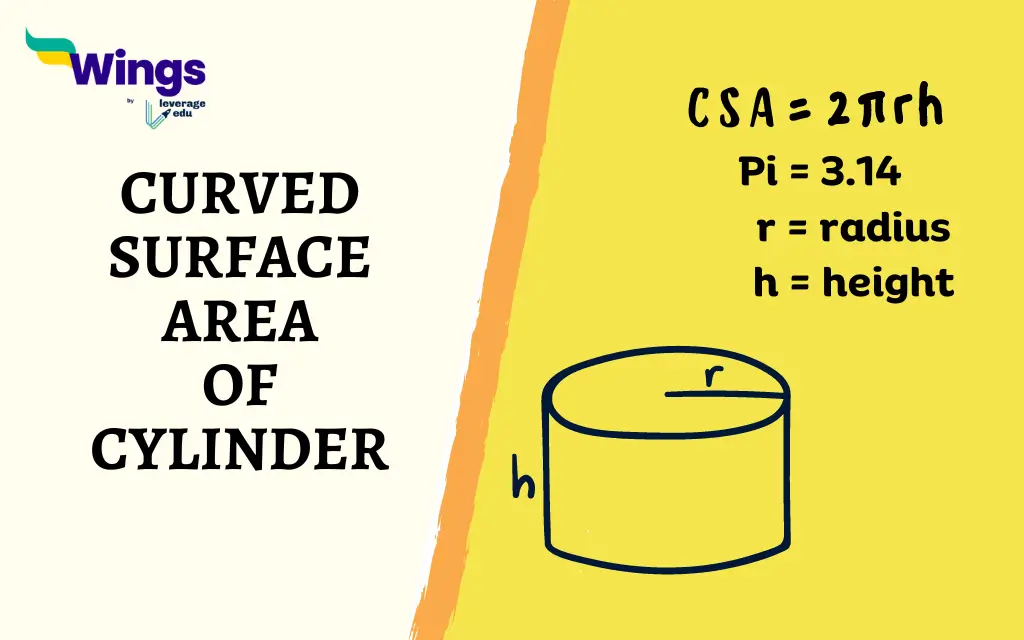Cylinders are three-dimensional shapes with real-world uses such as soup cans and pipes. Moreover, understanding the surface area of a cylinder is required for different purposes. One example would be estimating the paint needed or calculating the material required to create a cylindrical object. Additionally, this blog tells you about the concept of the Curved Surface Area of a Cylinder, the formula and examples.
Also Read: Surface Areas and Volumes
What is the Formula for the Curved Surface Area of a Cylinder?
If you unroll the Curved surface of a cylinder it will change into a flat rectangle. Additionally, the length of this rectangle is equal to the cylinder’s circumference, which is 2πr (where r is the base radius and π is pi). Moreover, the height of the rectangle stays the same as the cylinder’s height (h).
Therefore, the formula for the Curved surface area of a cylinder (CSA) is:
CSA = 2πrh
Here,
- CSA represents the Curved surface area.
- π (pi) is a mathematical constant with an approximate value of 3.14.
- r represents the base radius of the cylinder.
- h represents the height of the cylinder.
Also Read: 20+ Volume and Surface Area Questions and Answers
Curved Surface Area of Cylinder Example
Let us say you have a tin can with a base radius of 5 centimetres and a height of 10 centimetres. You want to find the Curved surface area (the area excluding the top and bottom circles) needed to wrap a creative label around the can.
Using the formula CSA = 2πrh:
- CSA = 2 ✕ 3.14 ✕ 5 ✕ 10 (assuming the value of π as 3.14)
- CSA = 314 cm²
Thus, you will need approximately 314 square centimetres of material for your creative label.
Take a look at another example. The radius is 3 meters and the height is 8 meters. Again we shall take the Formula, CSA = 2πrh.
- 2 ✕ 3.14 ✕ 3 ✕ 8 (assuming the value of π as 3.14)
- CSA = 150 m²
Therefore, with the radius being 3 meters and the height being 8 meters, the CSA is 150 m².
Related Blogs
I hope this helps! Did you like learning about the Curved Surface Area of Cylinder? Keep reading our blogs to learn more about the basic concepts of Maths!
 One app for all your study abroad needs
One app for all your study abroad needs














